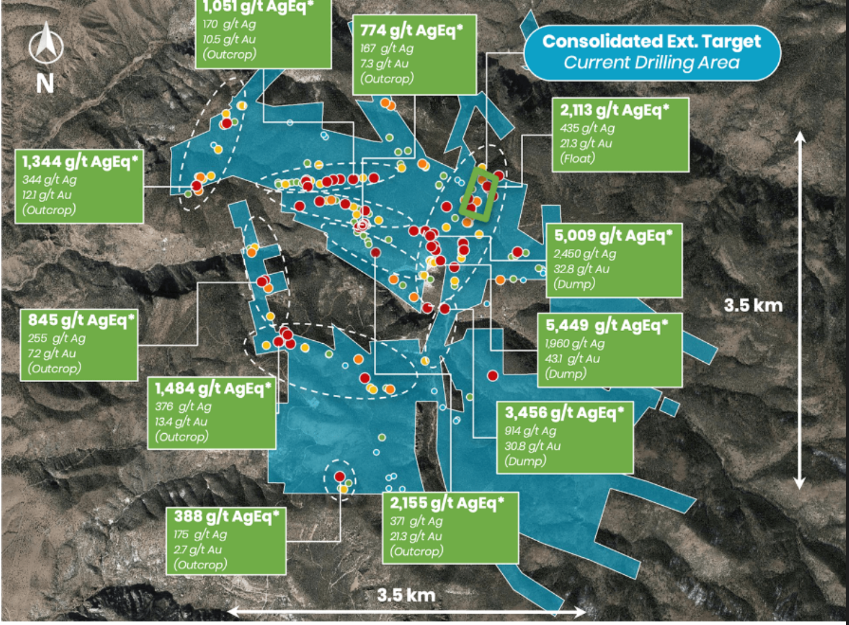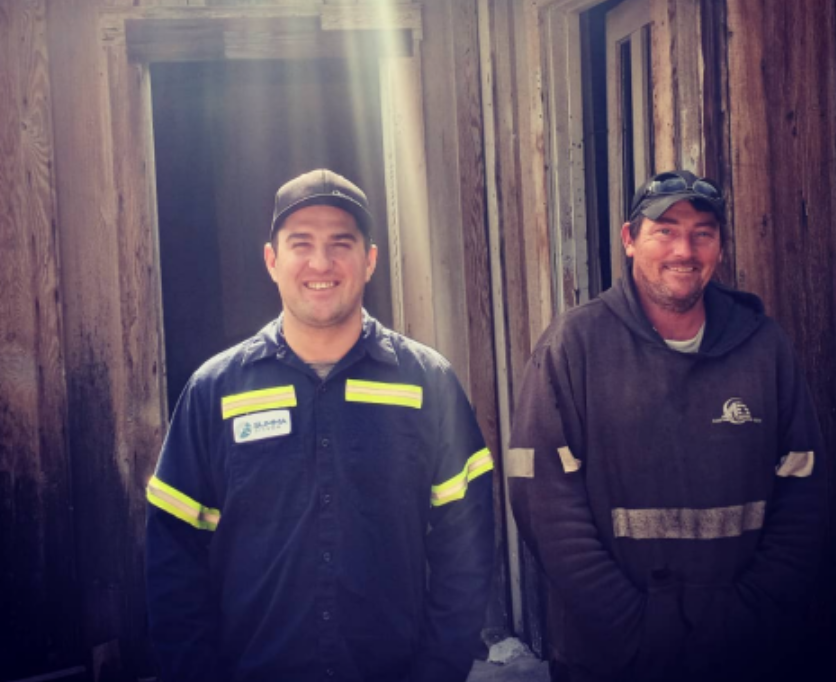Summa Silver. High-grade Gold & Silver in two Prime US Locations
- Silver Soaring

- Jan 13, 2022
- 6 min read
Updated: Jun 17, 2023
Summa Silver
History of Silver mining in Gila Wilderness / SW New Mexico Silver exploration and production have undergone four distinct phases in SW New Mexico. The first by the indigenous people dates back over 800 years. The second era was by Spain.
The third era by NM as a territory. The fourth era of NM as a state. We are now entering a fifth era set up to be the most prosperous, but we must first dissect the volatile past to get clues on how this will likely play out.
The idea of great mineral wealth in New Mexico was initially conceived from the ambitions of Spain's Cabeza de Vaca, who reached New Mexico in 1536. Cabeza de Vaca wanted to be the next Cortés who had stolen the Aztec's gold in 1520.
Many citizens of New Spain (Mexico) believed that one territory north (New Mexico) was a vast treasure chest. They had heard accounts of people seeing brilliant silver jewelry, vases, plates, ingots, and figurines.
Moreover, there were other accounts that the indigenous had practiced advanced metallurgy. The hope was that southern New Mexico would be another "Aztec score" that had provided so much for Cortés and his troops.
Before mining activity in New Mexico, vast quantities of silver were already discovered near Chihuahua, Zacatecas, and Durango, Mexico. As a result, these regions quickly became leading silver producers worldwide. Enthusiasm emerged because the topography and geology
of SW New Mexico are similar to the Northern Mexico silver-rich mountains called the Sierra Madre Occidental.
Discoveries of silver were made in the mountains just west of Socorro, leading to the formation of the Socorro Peak Mining district, which boomed in the 1880s.
In 1866 high-quality silver ores discovered in Georgetown (Silver City area) sparked a frantic search for silver ores all over the territory. It sent silver prospectors back into a region already combed for gold. While some prospectors were locating the first claims around Georgetown, others continued to search the Magdalena Mountains west of Socorro and this search continued westward towards Mogollon.
At Georgetown, where high-quality silver ores were found in 1866, a mining rush in 1873 became a full-fledged boom by 1875.
Meanwhile, in 1870, a US Calvary soldier named James Cooney from Fort Bayard was patrolling in nearby Mineral Creek Canyon. Cooney discovered rich gold and silver deposits and he kept his find a secret.
He could not pursue his discovery because his military service obligation to the Army was not yet complete. Cooney returned to his Army duties.
Several years later, when Cooney was discharged in 1876, he returned to the area, filing several claims. Then Cooney and his partner, Harry McAllister, were chased out of the region by the indigenous (Apache)
Cooney and McAllister returned two years later and began diligently working these rich veins. Word spread, and soon the area was crawling with numerous prospectors looking for their own fortunes.
The scrappy Chiricahua Apache targeted the miners because their land had been stolen by the US Army. Critical thinkers report their vengeance was just.
In April 1880, Chiricahua Apache, led by Chief Victorio, once again raided the area, including Cooney's claim. Cooney was killed by Chief Victorio. Victorio's people celebrated the kill as it represented killing off the enemy who had once been a member of an army that had unleashed genocide on hundreds of thousands of indigenous people.
Michael Cooney inherited the claim and continued his brother's mining operations. Several mines were developed in the area, including the Deep Down, Last Chance, and the biggest and most profitable – the Little Fannie. In 1909, it was recorded that nearly 70% of the precious metal of New Mexico was produced by the mines of Mogollon, amounting to $5,500,000.
During their lifetime, over 18 million ounces of silver were taken from the mines of the Mogollón Mountains. Close to $20 million in gold and silver were extracted. Silver accounted for about two-thirds of the total.
Mogollon earned a reputation as one of the wildest mining towns in the West, as gamblers, stage-coach robbers, claim jumpers, and gunmen all called the mining camp home.
The challenges to silver mining came next. This goes to the risk known as jurisdiction. Even after the treaty of Guadalupe Hidalgo, disputes over land claims were highly problematic. Court records indicate that these numerous disputes were so chaotic that they significantly dampened mining activity. The bitter reality was that NM was a territory with no legal autonomy. Thus, the only way to resolve land claim disputes was via lobbying in Washington, which was costly and took up to 15 years.
This is the same situation we see today when evaluating jurisdiction risk. Even when considering the most exceptional ore quality, technology, geologists, and management; often times this is no match for exhaustive government restrictions, interference, or inefficiencies.
Here was the three-punch combination knockout to mining activity in Mogollon New Mexico:
1.) Mining in New Mexico was devastated by the national political arguments over silver and its role in the national monetary system. Senator John Sherman, chairman of the Senate Finance Committee, had been determined to demonetize silver from at least 1867 and had arranged to have a bill to that effect drafted at the end of 1869. From then on, Sherman, Linderman, John Jay Knox (deputy comptroller of the currency and then comptroller), and Secretary of the Treasury George Boutwell cooperated to push a coinage bill that included the demonetization of silver.
2.) World War I
3.) World War III
Geology
Mogollon covers an extensive, silver-gold bearing epithermal vein field on a caldera margin of the Tertiary Bursum volcanic center. The Mogollon silver-gold deposits are classic epithermal veins demonstrating good grade and thickness continuity for strike lengths of up to 4,000 ft (1,219 m) in the Little Fanny and Last Chance mines and through a remarkably consistent, elevation-controlled vertical range of about 1,000 ft (305 m).
There are two sets of veins at Mogollon, an east-west set represented by the productive Little Fanny and Last Chance veins and a north-south set defined by the Queen vein developed in the Consolidated Mine.
Past Work
Recorded historical production, mainly from the Little Fanny and Last Chance mines during the period 1905 to 1925, and the Consolidated Mine from 1937 to 1942, consists of 15,700,000 ounces silver and 327,000 ounces gold from about 1.7 million tons (1.5 million tonnes) of ore.
Mining ceased in 1942 due to the wartime cessation of all gold and silver mining in the United States. Modern exploration activity at Mogollon has been limited to small programs by St. Joe Minerals, Cordex and John Livermore in three programs between 1982 and 1988 and consisted of 40,000 ft (12,192 m) of drilling in 53 rotary and core holes which were successful in outlining a partially delineated silver-gold deposit in the Queen vein. Significant intercepts of gold and silver were also encountered in many other veins including Anna E, Last Chance, South Fork, Mascot and Graveyard.
Excellent resource expansion potential exists at Mogollon as only 4.8 km of the total 72 km epithermal vein system has been developed.
Drilling is in progress at the Consolidated Extension target where the Company anticipates that a minimum of 15,000 m of drilling is necessary. This first target represents only 1.5% of the total vein and structure strike length present on the property.
The Project features poorly explored to completely unexplored veins with strong potential for further mineralization immediately surrounding historically producing high-grade mines. There are also a number of undrilled veins with documented small-scale underground exploration workings that were driven above the main mineralized target elevation window. The depth projections of these veins represent strong conceptual drill targets.
The three main targets are the Queen Vein, Independence and Gold Dust targets.
A 29 km² high resolution LiDAR survey identified previous areas of surface disturbance.
LiDAR (Light Detection and Ranging) is a method of measuring and examining the surface of an open pit mine or a pre-mining location using laser sensors attached to drones. Lasers continually scan the surface, measuring the time it takes for the light to bounce off the
earth and back to the sensor. This technology lets you look at the surface by eliminating all the plants and trees.
Think of an archaeologist wanting to see if there was evidence of past roads, burial chambers or lost villages. This technology gives you a treasure map from above versus walking the entire property.
Multiple Targets / Ore grade

Galen McNamara
CEO & Director
Co-founder and geologist with over 15 years of discovery and capital markets experience, former Senior Project Manager at NexGen Energy, Co-founder and Chairman of Goldshore Resources and Angold Resources.
Chris York
VP Exploration
Economic geologist with over 12 years experience focused on sediment hosted and epithermal narrow vein deposits, former Exploration Manager for Klondex Gold and Silver running all field activities.

Galen McNamara and Chris York in Mogollon New Mexico Photo by Jon Forrest Little
Concluding thoughts
It's believed that there is a significant amount of unfinished business with Summa Silver in Mogollon. Managing the following challenges will be the key to this project.
-Identifying a source of water.
-Navigating issues with the supply chain. (diesel, steel casing, etc)
-Figuring out best practices and cost friendly shipping out of Mogollon onto trucks is a huge obstacle in my opinion. This was an issue in the 1800s too. This area is remote.
Sources
Summa Silver website, Field Notes (Jon Little on property October 2022) & New Mexico Mining History articles and books.





















Comments